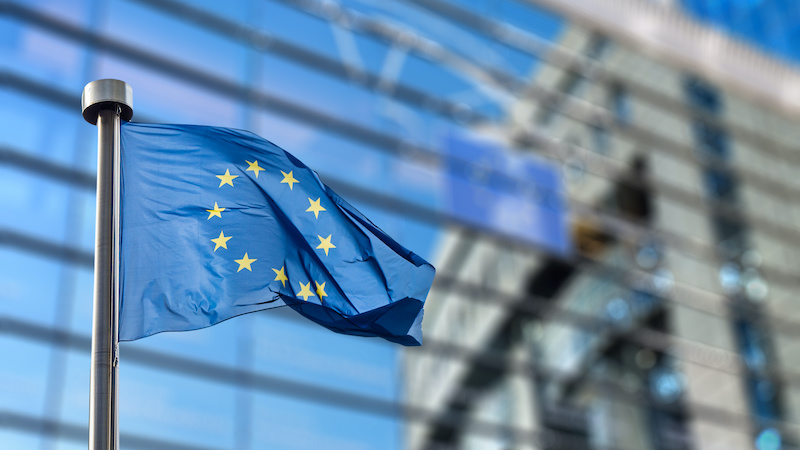The Dutch government has published a new policy memorandum on Foreign Trade and Development Cooperation. According to Liesje Schreinemacher, the Minister in charge of this portfolio, a lot of what the Dutch government are doing in this space “works very well”. Though the evidence shows that some of what they have been doing has not worked well, as we explore below.
The new strategy, accordingly titled “Doing what the Netherlands is good at,” breaks little new ground, picking up from the 2018 strategy, but placing more emphasis on the Netherlands’ competitive advantage in development cooperation, and with the national interest firmly at its core. Notable shifts include an intention to increase development spending overall, and to focus it on fewer sectors and fewer countries where it deems its aid can make a difference, alongside a conspicuous push to encourage international investment from Dutch business and for their own benefit.
In this blog, we review the new strategy and conclude that although it takes the Dutch government a step closer towards spending 0.7 percent of their Gross National Income (GNI) on Official Development Assistance (ODA)—the UN’s target— it leaves some fundamental questions unanswered on the trade-offs between development and trade policies. The strategy also signals a worrying step backwards on development effectiveness, particularly on country ownership and aid untying.
Focusing on competitive advantage
A strategy is a way through a difficulty, an approach to overcoming an obstacle, a response to a challenge. If the challenge is not defined, it is difficult to assess the quality of the strategy. The new Dutch strategy briefly identifies the world’s woes, from poverty to terrorism, illegal migration and climate change and sets out what they are going to do about them—focus resources on a few key sectors and countries, leverage private finance, invest in the multilateral system and listen to partners and young people on the ground.
A hallmark of a good strategy is concentrating energy and resources on a few pivotal objectives, in the Dutch case, "on what clearly works, and on the very best Dutch sectors and knowhow." The new strategy involves focus and, therefore, choice. And choice means setting aside some goals in favor of others which is what the Dutch have done based on their competitive advantage (focusing attention on their distinctive competencies and capabilities). They have dropped support for primary education and will instead focus on vocational education as well as what they see as their “special expertise”’ in water, agriculture and sexual and reproductive health and rights. While this might be the right approach for a relatively small donor, context, above all else, should guide the work of all aid agencies. What the strategy fails to acknowledge is that the constraints faced by different developing countries vary. Potential solutions vary too—even where the technical problem is similar, domestic political economy and community norms may require different approaches. To be effective, aid needs to focus first and foremost on what’s needed and on what may realistically be achieved in the particular country or region it is being given.
The Sahel, the Horn of Africa, the Middle East and North Africa will continue to be the priority regions, but the Netherlands will focus on 25 countries with large trading potential and 14 countries where it will follow a combined trade and development cooperation approach. The intention is to convert developing countries into trading partners, for the ultimate benefit the Dutch economy. And it will continue to scale down its development assistance to a range of countries, including Mauritania, Libya and Algeria. Aid to Indonesia, Ghana and Rwanda already drew to a halt in 2020.
In recognition that the Netherlands cannot go it alone on issues such as climate, human rights and security, the strategy places emphasis on the importance of working through the multilateral system to solve global challenges, including through the UN system in which it commendably commits to multi-annual, flexible and unearmarked contributions. There is also a strong pivot to working more through the European Union and contributing to Team Europe Initiatives with Dutch expertise and finance.
Reversing the downward trend on aid quantity
In 2010, the Netherlands was the sixth largest ODA provider in absolute terms in the Development Assistance Committee (DAC). Over a decade later, Italy, Canada and Sweden have all overtaken them. Since Mark Rutte took office in 2010, the Dutch ODA/GNI ratio has experienced an almost continuous decline (see figure 1) despite an increase in 2015 due to additional spending in humanitarian assistance and in-donor refugee costs. The new strategy proposes to reverse this trend by increasing the ODA/GNI ratio from 0.52 percent to 0.65 percent in 2026. However, legislation which links ODA and GNI means that the impact of the war in Ukraine on the Netherland’s GNI could have negative implications for its development budget and jeopardize the upward trajectory.
The policy document also proposes an increase in climate finance in the years to come. From €596 million spent in 2020 on public climate funding, the government wants to reach €900 million in 2025, with an even split between mitigation and adaptation. Building on its experience with the Dutch Fund for Climate and Development (DFCD), the strategy sets the objective of mobilizing at least another €900 million in private climate finance in 2025.
Figure 1. ODA disbursement as a share of GNI, 2009-2021
Source: OECD CRS. 2021 figures are preliminary.
Still struggling to deal with policy incoherence
In February 2022, the International Research and Policy Evaluation Department (IOB) of the Ministry of Foreign Trade and Development published a report on development and trade spending. A key finding was the limited coordination between the Netherlands’ aid and trade activities, in part, due to a “decrease in political attention” to the issue but also as a result of the segregation of budgets and the incoherence in the range of instruments. The new strategy responds to this criticism by setting out a commitment to invest €84 million in joint work in 2023 and €190 million in structural investment in the coming years. However, we are none the wiser as to how the funds will actually be used. Nor is there an assessment of the negative effects of Dutch trade policy on developing countries and how the government will mitigate them.
Further regressing on aid effectiveness
Compared to other countries, the percentage of Dutch ODA that is managed locally in developing countries is very small and most of it is programmed at headquarters. CGD’s 2021 assessment of the Quality of Development Assistance (QuODA) ranked the Netherlands a poor 34th out of 48th donors, on "ownership” expressed by its partners, with below average scores on alignment with country objectives and use of country financial systems. The strategy does nothing to address this; a missed opportunity, especially given the focus on a smaller number of development partners. It also reaffirms the Dutch position of not engaging in direct budget support, further undermining local ownership.
The strategy also aims to offer more opportunities for Dutch businesses in developing countries, enabling them to gain access to “promising” new markets. For example, there are plans to have 70 percent of the assignments of the public infrastructure programs, DRIVE and D2B, carried out by Dutch companies. This takes us back to the age-old problem of tied aid. The Netherlands has been a top performer with 99 percent of its aid untied in 2020. There is a caveat though: it has, to date, not reported on the share of procurement contracts awarded to Dutch companies. The new strategy brings with it the risk that tied aid will be back on the agenda.
It's safe to say the new Dutch trade and development policy will not mark a profound shift in the Netherlands’ foreign relations. With an economy largely driven by exports, the country will continue to leverage on its competitive advantage in key sectors such as water and agriculture. At a time when levels of need in developing countries are urgent, following the dual impact of COVID-19 and the economic crisis sparked by the invasion of Ukraine, and while other donors scale back their efforts, the government’s decision to increase its development budget, including international climate finance, is commendable. However, while “doing what we’re good at” is the mantra of the new policy, it is questionable for whose primary benefit it is. In implementing the strategy, the Dutch government should use its reduced country footprint to strengthen its partners’ ownership, ensure that its trade for development is well-spent and avoid tied aid which is both wasteful and ineffective.
The authors would like to thank Rachael Calleja and Ian Mitchell for their useful comments.
Disclaimer
CGD blog posts reflect the views of the authors, drawing on prior research and experience in their areas of expertise. CGD is a nonpartisan, independent organization and does not take institutional positions.







